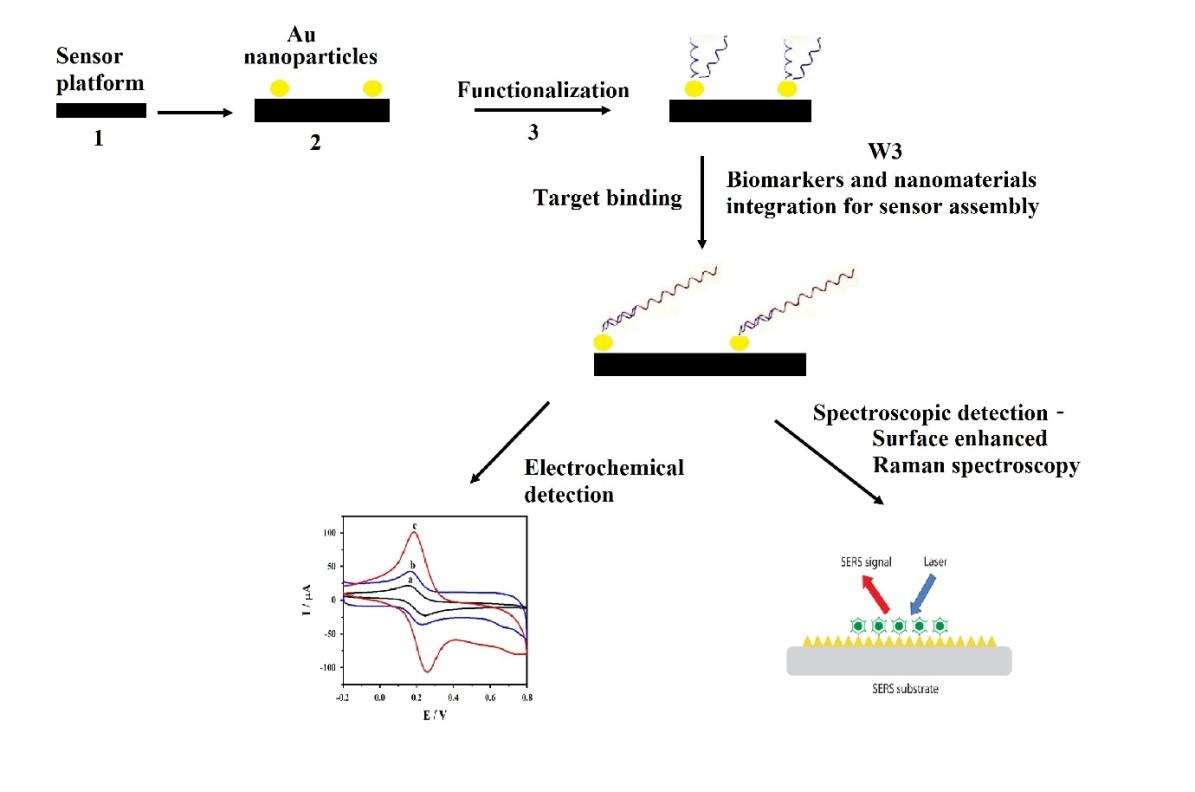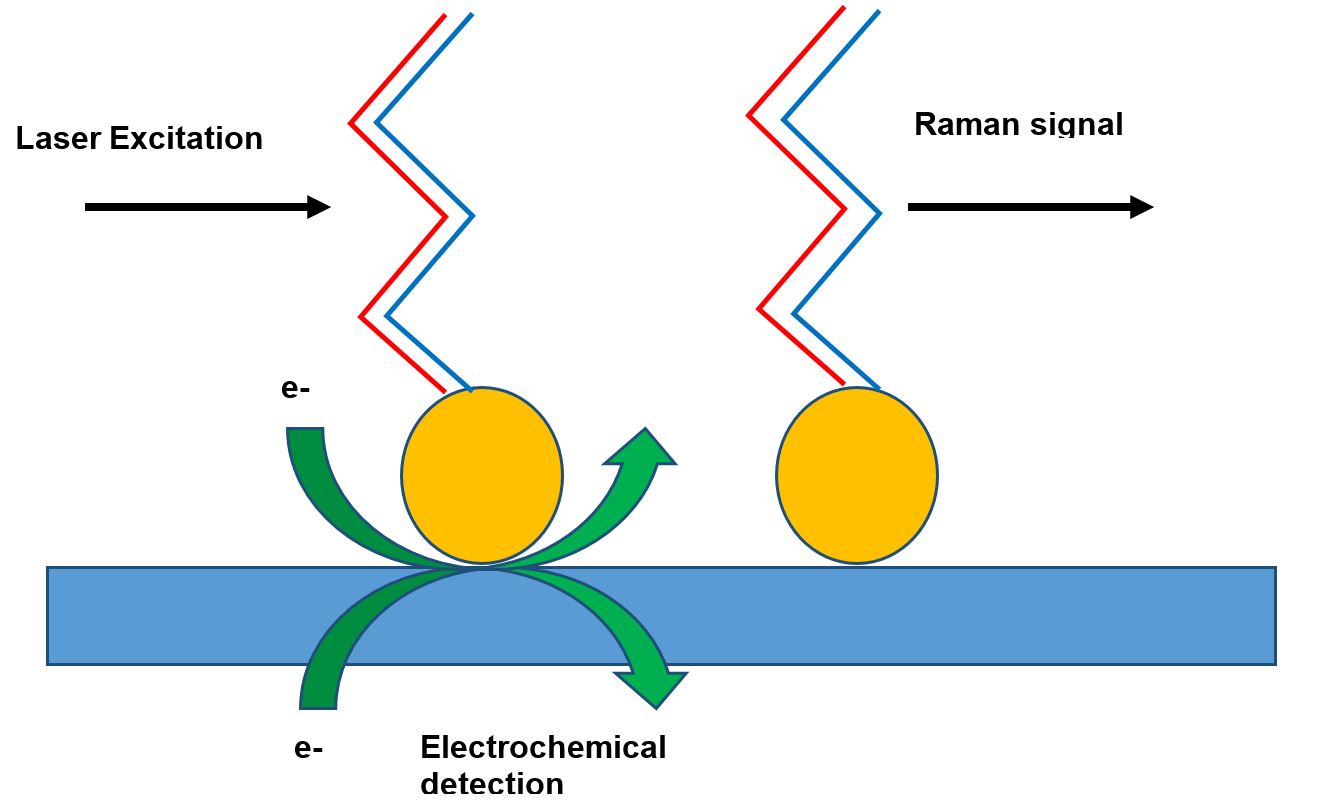Biosensor and Microarray Assembly-Nano-Bio- Spectro Fusion...
GC001C-14SBS: Biosensor and Microarray Assembly-Nano-Bio- Spectro Fusion For Devices Fabrication and Enhanced Signal Detection
Abstract:
Detection of target molecules such as nucleic acids and enzymes with specific interaction or binding with binder molecules attached to nanomaterials such as gold nanoparticles, carbon nanotubes, conducting polymers, could be done via electrochemical and Raman spectroscopic techniques. These signal detected using both techniques such as Raman spectroscopy and electrochemical detection are very sensitive, for example electrochemical detection is to the scale of few nano-Amps (10-9 A).
The sensor platform may include conducting polymers such as polyaniline and polypyrrole, carbon nanotubes, and graphene materials such as graphene oxide, reduced graphene oxide, nitrogen-doped graphene. Deposition with Gold nanoparticles offers binding with target molecules through specific interaction with biomarkers. Biomarkers have very specific interaction with target molecules such as nucleic acids, enzymes etc. This implies that DNA (nucleic acids) molecules could bind with biomarkers, therefore assembled on the surface of the nanomaterials. Such assembly will allow a signal to be generated via spectroscopic detection such as Raman scattering and electrochemical detection.

Figure 1. A schematic diagram of the steps taken to modify an electrode surface with biomarker (single strand DNA or probe DNA) and nanomaterial (commonly gold nanoparticle) which impart a radicalized surface with respect to the attachment of an analyte and is the basis of an electrochemical detection of the respective analyte.

Figure 2. The Raman and electrochemical detection of an analyte from a surface modified with biomarker and nanomaterial (gold).
Research objectives:
The current methods for DNA detection is by using Raman Spectroscopy or Surface Enhanced Raman Spectroscopy (SERS), a very expensive technique. So we explore different methods cheaper cost, instead of SERS.
Methodology:
The Au nanoparticles and DNA is immobilized onto an electronically conducting substrate (electrode) to generate an electrical current (previous slide) to generate an electrical signal. Electrochemical detection using a modified electrode surface (Figure 1) is sensitive (few nanoAmps until few picoAmps), is cheaper than SERS (cost few millions in instrumentation) in addition the technique is portable with miniaturization for on-site detection.
Detection of target molecules such as nucleic acids and enzymes with specific interaction or binding with binder molecules attached to nanomaterials such as gold nanoparticles, carbon nanotubes, conducting polymers, could be done via electrochemical and Raman spectroscopic techniques.
Applications:
The technique can be applied for biomedical field in the detection of biological analytes and in industrial samples for the monitoring of pollutants.
Sub-programme leader:
Prof.Dr.Wan Jeffrey Basirun
Co-researchers:
Dr Wageeh Abdulhadi, Prof Dr Sharifah Bee, Dr Samira Bagheri, Assoc. Prof. Dr Md Eaqub Ali & Dr Nurhidayatullaili
Outputs:
ISI-Indexed Journal
